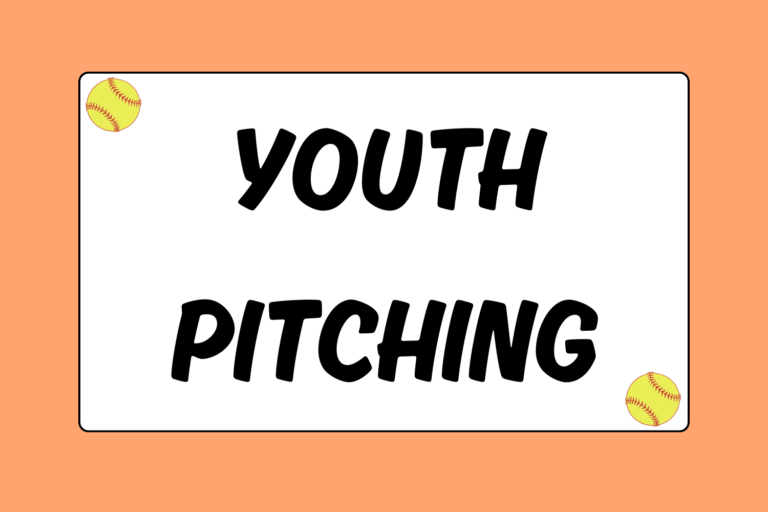Slowpitch softball is played by sets of rules dependent upon the particular league, level of play, and class of program. As such, it would be an incredible feat to list every slowpitch rule; however, similarities exist across all levels of play. The rules and regulations outlined below are those regulated by the United States Specialty Sports Association (USSSA), the National Softball Association, Inc. (NSA), and the Amateur Softball Association of America (ASA), the three highest governing bodies for slowpitch softball.
Classes: Levels of Play
Unlike fastpitch, slowpitch is not limited by gender (there are only a few male fastpitch teams). Slowpitch is divided by classes (levels of play that differ by required skill) and gender:
- Men’s: Only men are allowed on the roster.
- Women’s: Only women are allowed on the roster.
- Coed: These teams are mixed. Generally, the limit is five men and five women. However, there are certain classes that allow a team to play only three women and up to seven men.
- Class B: This is the highest level of play, often considered the most competitive.
- Class C: This is a competitive level of play, but competition is not the only focus. Players are of mixed skill levels.
- Class D: This competition is low-key. Players (mostly of beginner and average skill) are often on the field more for recreation than to dominate and win championships.
- Class E: Perhaps the most leisurely of the programs, these teams are made up of mostly beginning (novice) players with little to no experience in softball.
Positions
Ten defensive players are allowed on the field: Pitcher, catcher, first baseman, second baseman, third baseman, shortstop, right fielder, center fielder, left fielder, and the extra player (commonly known as the rover and often used as a fourth outfielder). Every team must have the minimum number of players present in order for a game to start (a number regulated by the local league).
The Pitcher
Slowpitch pitchers throw underhand and are bound by certain rules:
- The pitcher’s mound is set 50 feet away from home plate.
- From the mound, the pitcher may start up to six feet behind the mound to start the pitch. However, the pitcher’s pivot foot must be in contact with the plate when the pitch is released.
- Any windup or arm motion is allowed as long as the pitch is thrown underhand.
- Pitchers must show the ball in front of their bodies for at least one second before starting the delivery, and the pitcher must always face home plate during the pitch.
- The entire pitch must be made within five seconds; however, quick pitches are illegal.
- The general warm-up between innings may not be longer than one minute or three pitches.
- If a pitcher wishes to intentionally walk a batter, no pitches need to be thrown.
The Pitch
Slowpitch is most recognized for its lob pitch. Meaning, it has an arc. The arc of the pitch must reach at least three feet upon its release, but it should not rise any higher than 10 feet at any point during the pitch. However, the exact speed (which is restricted) and height limits are regulated by the local league and umpire.
The strike zone is most often called anywhere over home plate between the batter’s back shoulder and knees. Many leagues place a rubber plate on the ground behind home plate to serve as the strike zone.
Batters
Up to two additional players are allowed to hit, making the maximum number of batters 12. Batters must also follow their own rules:
- Batters are not allowed to bunt/chop the ball deliberately downward (whether it is fair or foul).
- Most slowpitch leagues will walk batters on three balls and strike them out with two strikes. However, three strikes and four balls are also granted. (Check with your local league or umpire-in-chief for the exact count.)
- A foul tip on the last strike will result in an out.
- No designated batters are used.
- If a home run is hit over the fence in a men’s or women’s game, the batter does not have to run the bases.
Base Runners
Base runners are also restricted by certain rules.
- A base runner must stay in contact with the bag until the pitched ball touches the ground, reaches or passes home plate, or is batted.
- Stealing (advancing to the next base) is not allowed if the pitch is not batted.
The Field
Because the ball is lofted at such low speeds in slowpitch, batters have a great advantage in terms of timing. This results in power hitting and the need for fences. Leagues may differ where they set their fences, but there are regulated minimums that must be met:
- Men’s B, C, D, & E: Fences are set at a minimum of 300 feet.
- Women’s Class A & B: Fences are set at a minimum of 275 feet and a maximum of 350 feet.
- Women’s Class C & D: Fences are set at a minimum of 250 feet and a maximum of 325 feet.
Bases are set 65 or 70 feet away from each other, the distance designated by the local league.
Equipment
Like every other sport, slowpitch softball has mandates on its equipment:
- The official bat must be approved: Bats must not exceed 31.5 ounces (if playing in USSSA) or 38 ounces (if playing in NSA) in weight. They must also not exceed 34 inches in length, and the diameters may be no larger than 2.25 inches along the barrel. All bats must be stamped with USSSA, ASA, or NSA approval. At any time during a game, if an umpire requests to check game bats, they must be produced. If ever in doubt about the legality of a particular bat, each governing body produces approved bat lists each year.
- Metal cleats are prohibited: Only soft or hard rubber cleats may be used, along with turf shoes or sneakers.
- 11- and 12-inch balls: Slowpitch teams use 11- and 12-inch balls with yellow covers. Men’s teams use 12-inch balls, while Women’s teams use 11-inch balls. Coed teams are able to use either, depending on the level of play (distinguished by the local leagues).
- Runners must score by touching the scoring plate: A scoring plate, or a space designated for runners to pass through, is set eight feet outside the third base line and even with home plate. Runners who are attempting to score never actually touch the home plate between the batter’s boxes; they must run through the scoring plate, instead.
Run Rules
There is a unique rule in slowpitch called the flip/flop rule. The rule states that in an inning when the run rule for a particular game is exceeded and the home team is losing, the home team will stay up to bat and bat as the visiting team. If, after three outs, they were not able to reduce the run difference, the game will be over. If they are able to reduce the run differences, the visiting team will come up to bat and continue the game as normal. The flip/flop rule will reinstate itself any time this situation occurs.
| Program | Run Rule | Inning |
| Men’s B, C, D, E | 25 after 3 | 2nd Inning |
| 20 after 4 | 3rd Inning | |
| 15 after 5 | 4th Inning | |
| Women’s A, B, C, D | 15 after 3 | 2nd Inning |
| 10 after 5 | 4th Inning | |
| Coed | 20 after 3 | 2nd Inning |
| 15 after 4 | 3rd Inning | |
| 10 after 5 | 4th Inning |
Home Run Limits
Slowpitch teams are also limited by the number of home runs (any untouched ball hit over the fence) they can collectively have during a game. Any home run hit beyond these limits will be recorded as outs. Your local league may use different limits, so make sure to double-check with the umpires:
- Men’s B: 4
- Men’s C: 2
- Men’s D & E: 0
- Women’s A & B: Unlimited
- Women’s C: 3
- Women’s D: 0
- Coed major male: 8
- Coed major female: Unlimited
- Coed C male: 2
- Coed C female: 2
- Coed D & E male: 0
- Coed D & E female:0
Ties & Forfeits
If a tie occurs after the last inning or the time limit (both determined by the local governing league), teams may continue play until one scores more runs in their half of the inning before the third out is made.
If a game is forfeited — due to the failure of a team to show up, a refusal to play, or not having enough players to start — the score will be recorded as 7-0 in favor of the team that did not cause the forfeit.
Other Resources
Slowpitch rules are complex because each leagues follows official slowpitch rules (regulated by ISF, ASA, USSSA, and NSA), but each league is also able to incorporate its own league-specific rules. The rules above are the most common rules seen throughout all leagues and levels of play in slowpitch softball. For more in-depth information, visit softball’s highest governing bodies:
- The International Softball Federation (ISF)
- The Amateur Softball Association of America (ASA)
- The United States Specialty Sports Association (USSSA)
- The National Softball Association, Inc. (NSA)





